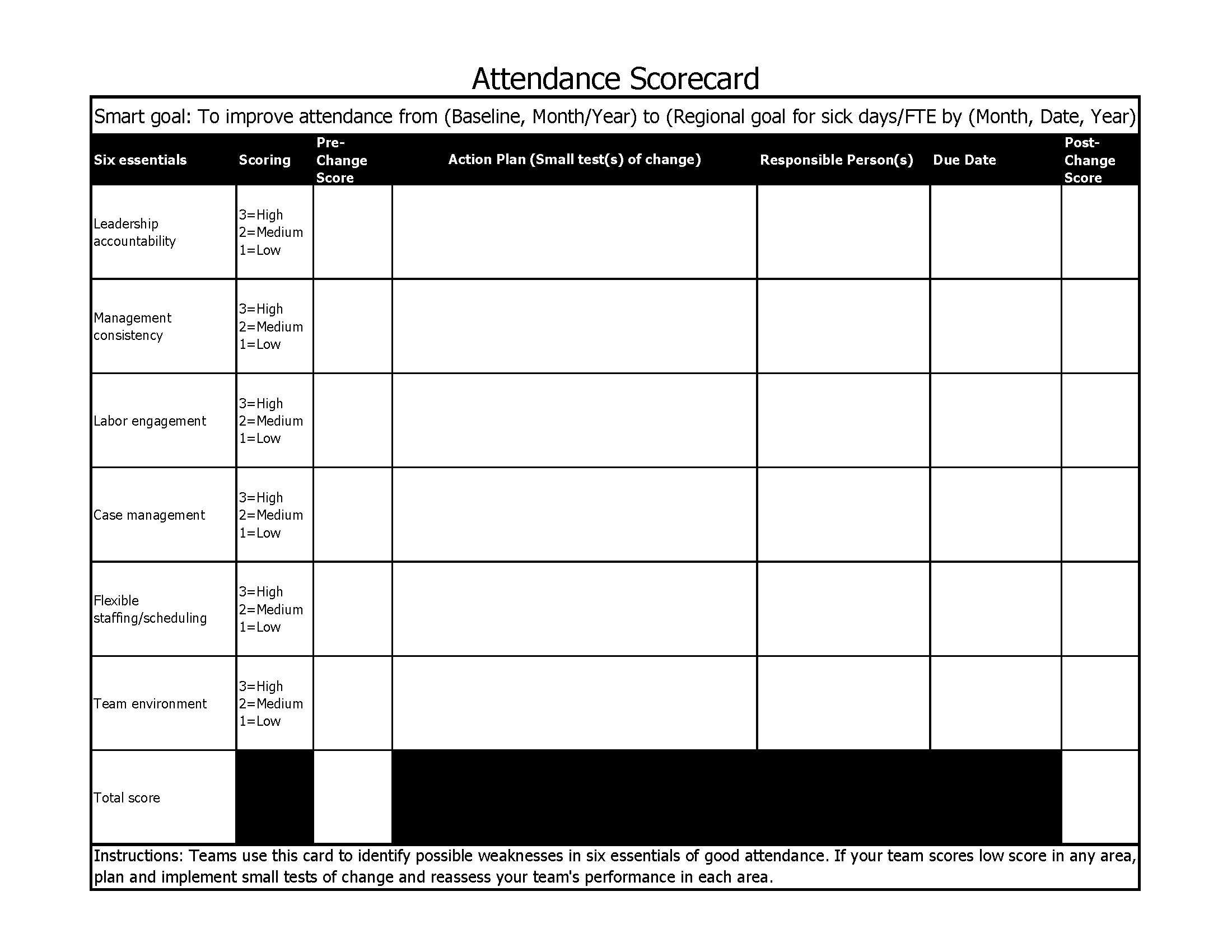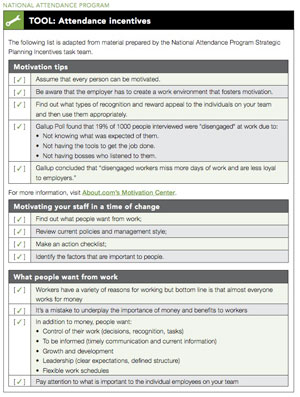12 Tips for Building Your Team
Deck: Take one action for every month of the year
Want to take your team to the next level? Make good things happen for yourself, your co-workers and your members and patients? Collaboration is one of the four critical skills needed to meet future challenges with ease. Use these 12 team-building tips to make every month count.
1. Par-tay
Celebrate your team’s successes and acknowledge — even celebrate — failures. Failures are great opportunities for learning if you focus on where the process (not the person) needs improvement. After each test of change, recognize and reward contributing team members at huddles and meetings. Use small wins to keep the momentum going.
2. In and out
Help employees track their sick days and time off by printing out and distributing our colorful, always popular attendance calendar.
3. Follow the money
Learn your department’s budget as a team and get everyone’s ideas on how to reduce costs. Sign up for a business literacy training.
4. Track it in tracker
Document your team’s work regularly, accurately and concisely in UBT Tracker. It will let others see and learn from your team’s accomplishments.
5. Stop the line
Ask for help or call a stop to the work when you see an imminent danger or need help to safely complete a task. Then look for system improvements and root causes of problems — ask not just what happened, but why.
6. Grow leaders
Rotate responsibilities for leading meetings and managing improvement projects among all team members. This will build your team’s skills and strengths.
7. Two words
Huddle daily. It works. Watch the video “Huddle Power” and use the tools there to get you started huddling with your team.
8. Clean up your act
Become supply savvy. Make a full assessment of supplies — track inventory, tidy up storage areas and streamline ordering. Simple changes can save thousands of dollars. Download our 6S tool to make this work a snap.
9. Take a (waste) walk on the wild side
Perform a waste walk. Impartially observe a work area or work process to identify waste or inefficiency. Get walking with our online Waste Walk toolkit.
10. Save a tree
Go paperless. Don’t print out agendas and documents. Send them out via email or use a projector instead.
11. Get online
Help patients sign up on kp.org. Remind them they can securely view their medical records and most lab results, email their doctors, schedule appointments and refill prescriptions online. Bonus tip: Encourage tech-savvy members to download the kp.org app so they can access these features on their phones. Check out how one team got 90 percent of its patients signed up.
12. Spread and borrow
Did something work for your team? Spread the word to others. Need inspiration for your next improvement project? Look for other teams that have succeeded. Work with your UBT consultant or union partnership representative to spread your successes. Visit our Team-Tested Practices section to get ideas you can try with your team!




